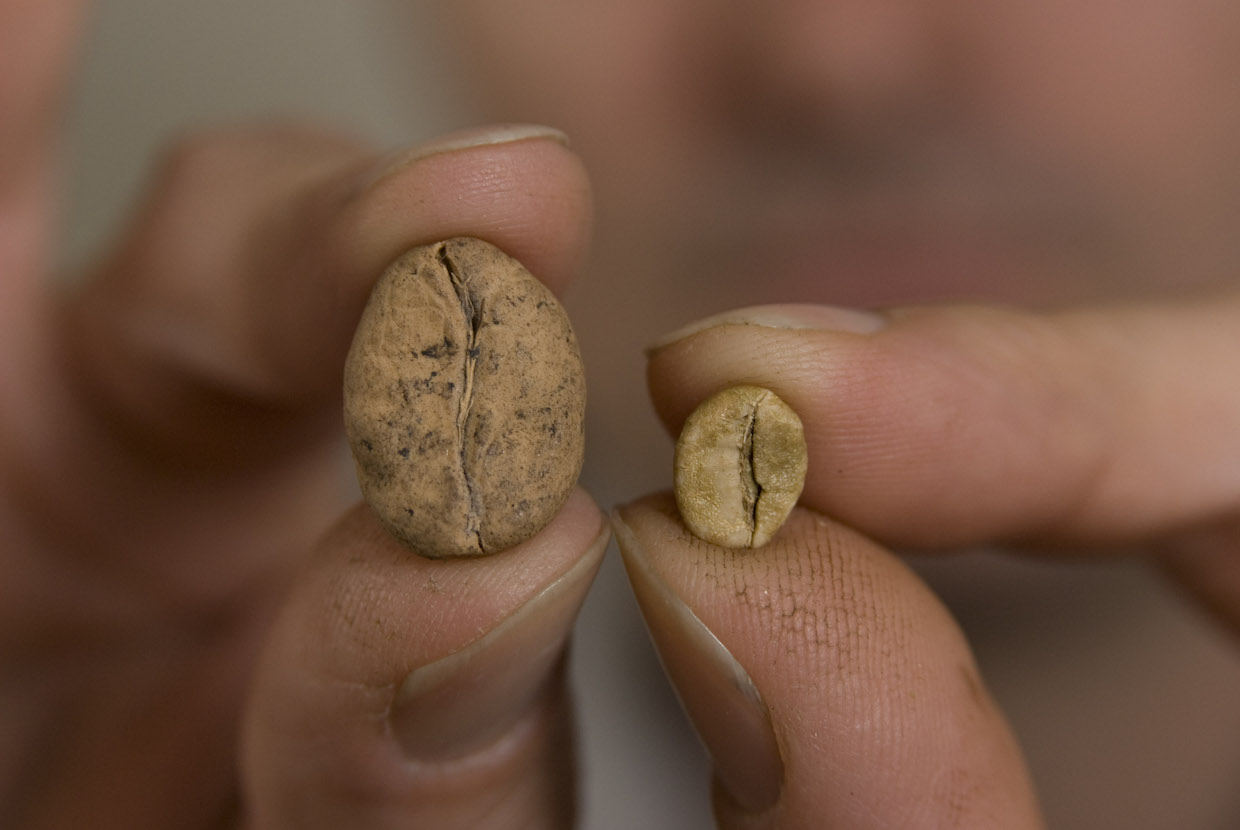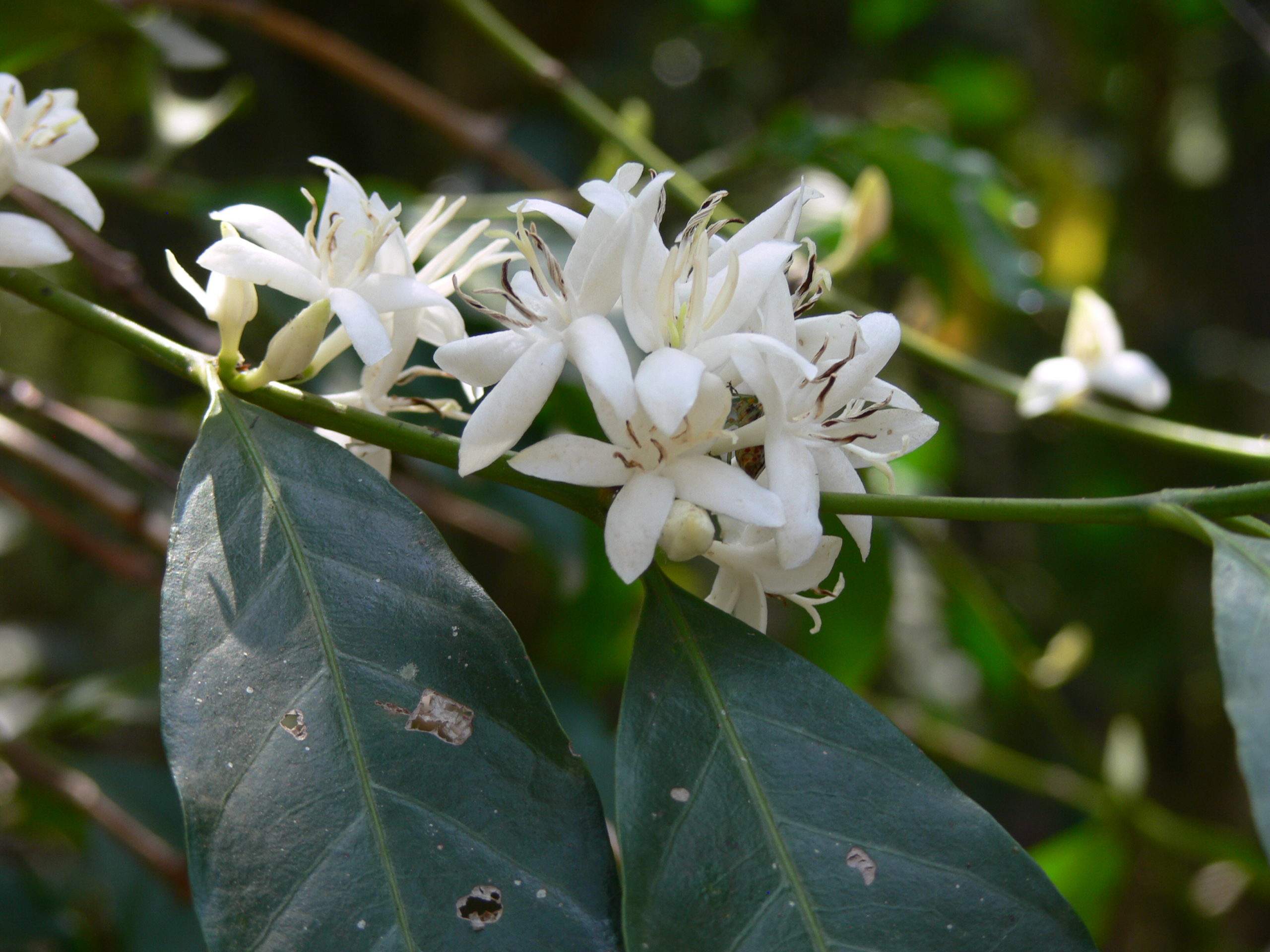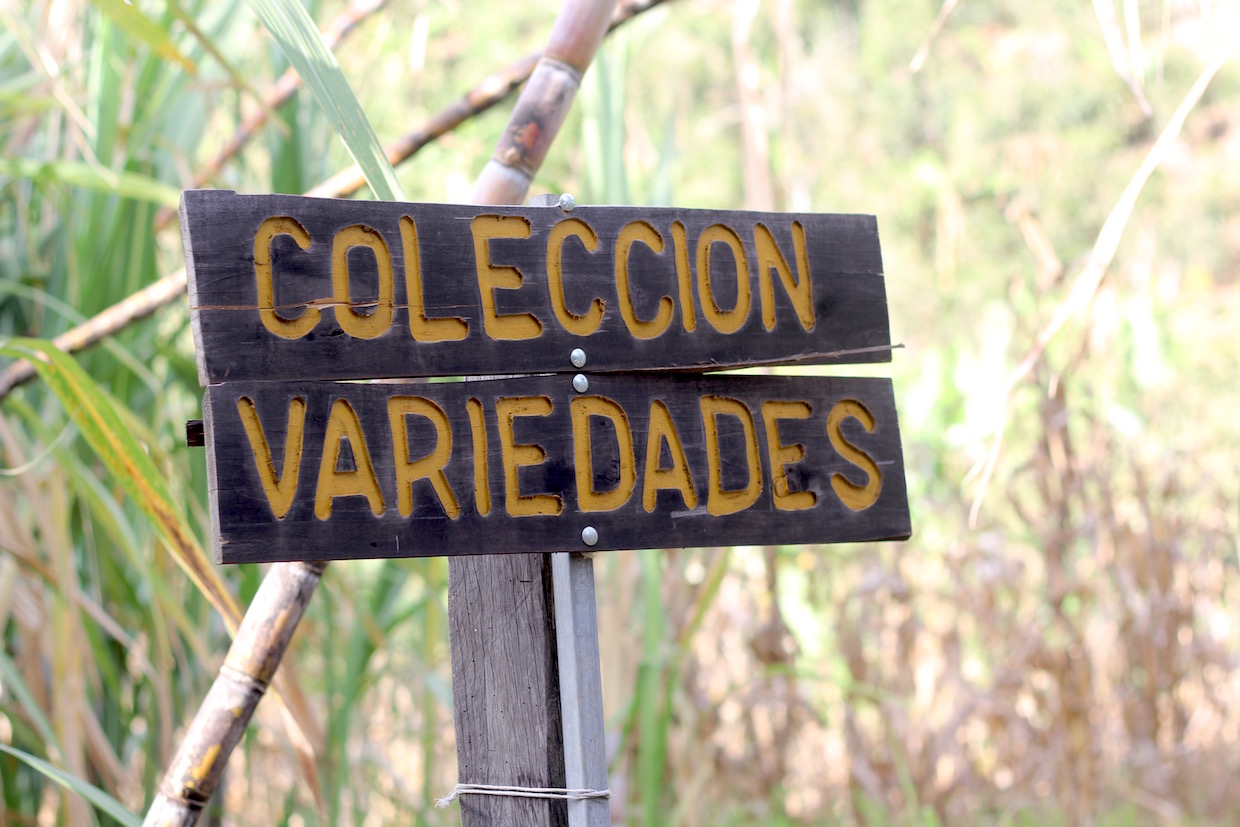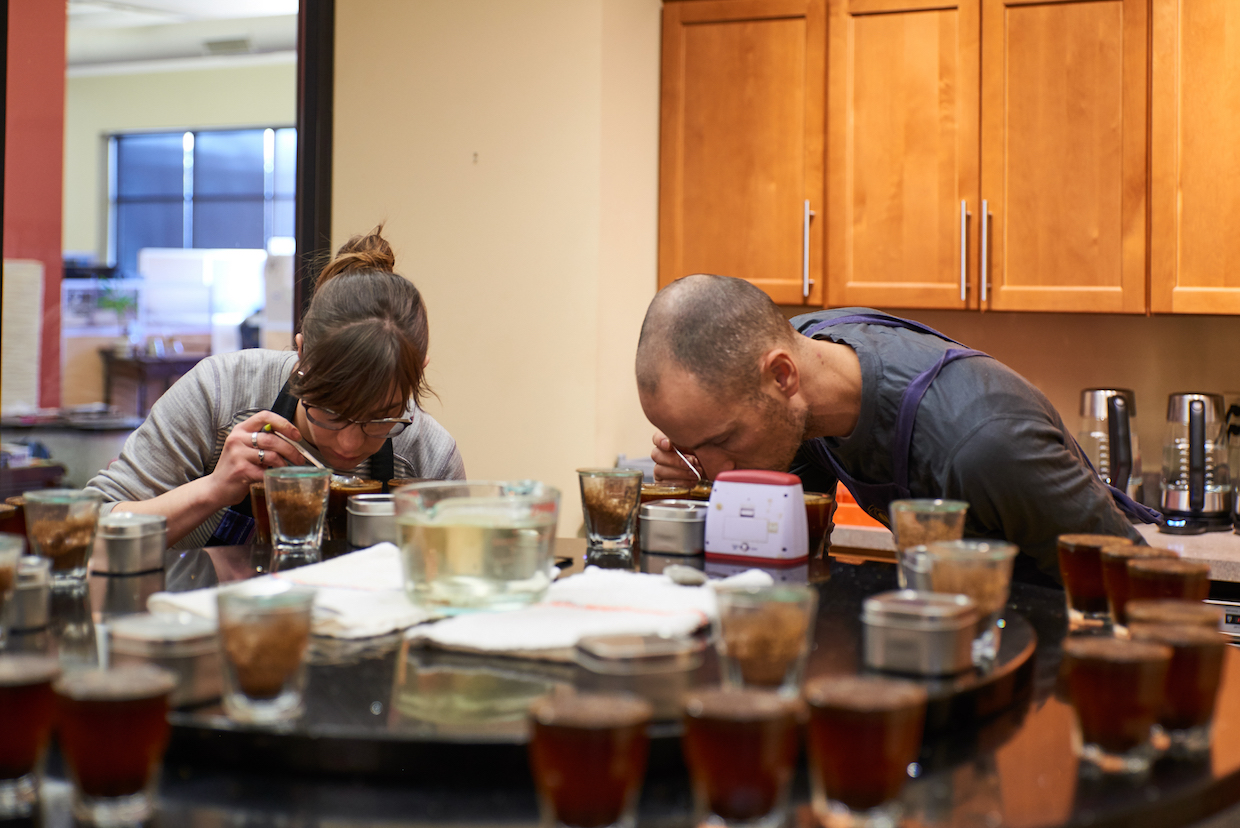
Beans of threatened coffee species Ambongo (left) and Arabica (right) in Madagascar. Photo courtesy of Kew.
The year in coffee science news began with some groundbreaking but dismal news that most wild coffee species, including arabica, are now classified as in danger of extinction.
Yet for what wild and commercially cultivated coffee remains, scientists brought a wealth of new research to the fore. These advancements ranged from seed (“World Coffee Research Releases Free Guides for Seed and Seedling Production”) to cup (“Science Shows Differences Between Flat Bottom and Semi-Conical Filter Brews”).
Special mention should go to guest writer Chris Kornman of The Crown: Royal Coffee Lab & Tasting Room for his overview not of individual scientific results, but of the many science-driven organizations focused on coffee agronomy.
Here are some of our biggest coffee research and science stories of 2019:
Most Wild Coffee Species, Including Arabica, Are Now in Danger of Extinction
Wild Coffea Arabica is for the first time being classified as an endangered species. Worst yet, new research shows that 60 percent of wild coffee species are now under the threat of extinction, posing a long-term risk to local and global supply…
World Coffee Research Releases Free Guides for Seed and Seedling Production
While abundant resources are directed to the cup end of coffee’s seed-to-cup journey, much less coordinated attention has been paid to the seed end.
That chasm has been significantly narrowed with the release of two new guides from the pioneering nonprofit World Coffee Research that address what the organization calls a “hidden crisis” in the coffee sector: a lack of adequate systems throughout the coffee-growing world towards delivering high-quality, healthy seeds and seedlings to farmers…
Science Shows Differences Between Flat Bottom and Semi-Conical Filter Brews
Both fascinating and actionable for working coffee professionals, the research that was first published in March of this year in an article in The SCA’s 25 Magazine, Issue 8, was recently published a second time in its academic form as the cover story for the August 2019 edition of the Journal of Food Science…
With Simonelli Support, Coffee Science Foundation Launching Espresso Research Project
The CSF envisions the espresso research project as being potentially transformative in regard to the coffee industry’s collective understanding of espresso extraction, flavor and consumer perceptions. Towards that end, the CSF hopes to eventually widely disseminate the research findings through media outreach, through potentially dozens of seminars and lectures, and through integration with Specialty Coffee Association‘s education curriculum…
Exploring the Wide World of Coffee Agronomy Research at Origin
Back in May, The Crown and Equator Coffees co-hosted Greg Meenahan of World Coffee Research for a pair of speaking engagements devoted to sustainability and science. Lively discourse and shared information prompted me to write a small blog on the work that the United States-based WCR engages in around the world.
As a companion piece to that, I’d like to highlight another, much larger piece of the global coffee research puzzle, focusing on the work being done on the ground in coffee-growing countries…
132 Years of Groundbreaking Coffee Research at Brazil’s IAC
One of the oldest agricultural research centers in the world, the Agronomic Institute of Campinas (IAC) has had a remarkably powerful influence over the development of coffee in Brazil and, by extension, the world…
Shade Grown Doesn’t Necessarily Mean Bird Friendly, Researchers Find
In coffee, the ongoing assumption is that the term “shade-grown” connotes increased biodiversity and some amount of bird friendliness.
Yet as the local environmental effects of coffee-driven deforestation and agroforestry become better understood, researchers from the University of Delaware have concluded that the kind of trees make a significant difference in migratory bird friendliness…
The Launch of the Coffee Science Foundation
Peter Giuliano, the chief research officer at the SCA and executive director of the Coffee Science Foundation’s inaugural board of directors told Daily Coffee News that the disaggregation in coffee research is especially pronounced in the specialty coffee sector.
“There are lots of small entrepreneurial businesses that collaborate well together but have not collaborated on a lot of research together,” Giuliano said. “So we realized we needed an institution to help aggregate resources and also attention to this kind of research.”…
Cafe Imports Unveils Watershed Report on Water Activity in Coffee
Over the past six years, sensory analysis experts at Minneapolis-based green coffee importing company Cafe Imports have been diligently recording water activity and moisture content in coffees in between their many thousands of cuppings.
As a result, they’ve ended up with what is certainly the most robust data sets on water activity in coffee to date, and just this week they’ve graciously shared those data with the rest of the coffee world…
The Lost Coffee Species: The Story of Coffea Stenophylla
As news of the potential demise of wild coffee due to climate change spread far and wide last month, one smaller subject was somewhat overlooked. In fact, it’s been largely overlooked for hundreds of years.
That subject is Coffea stenophylla, often referred to in small coffee or botany circles as the “Highland Coffee of Sierra Leone.”…










Comment